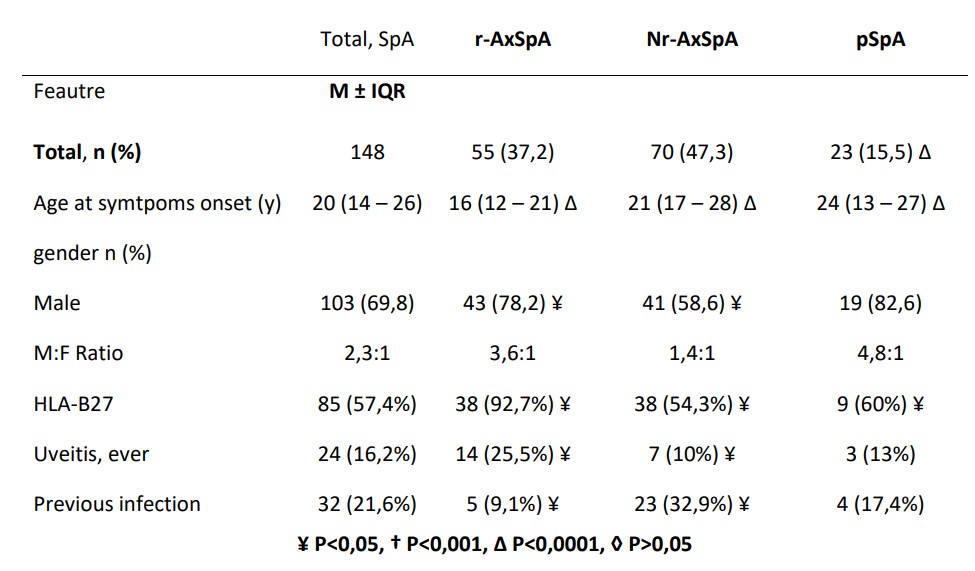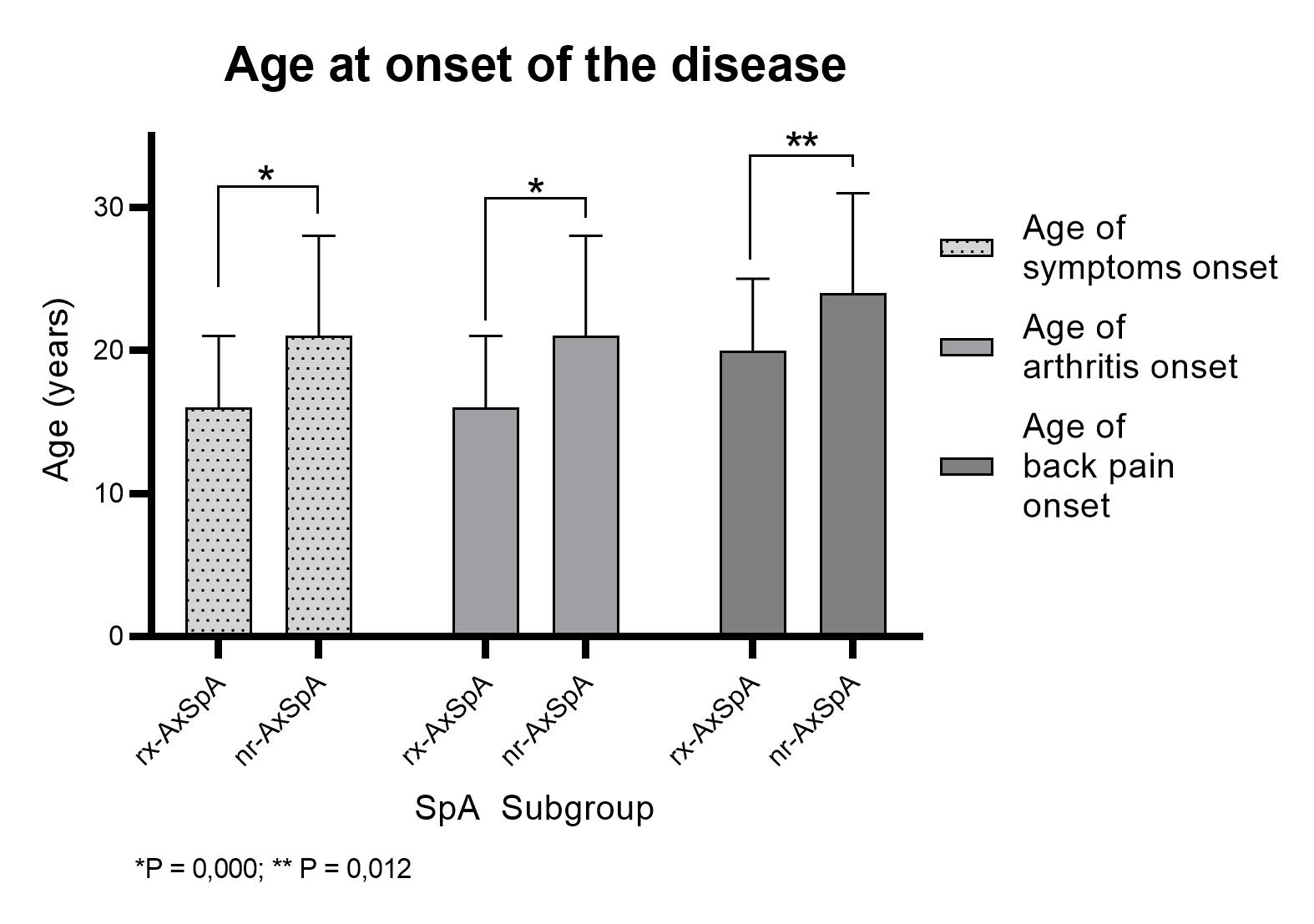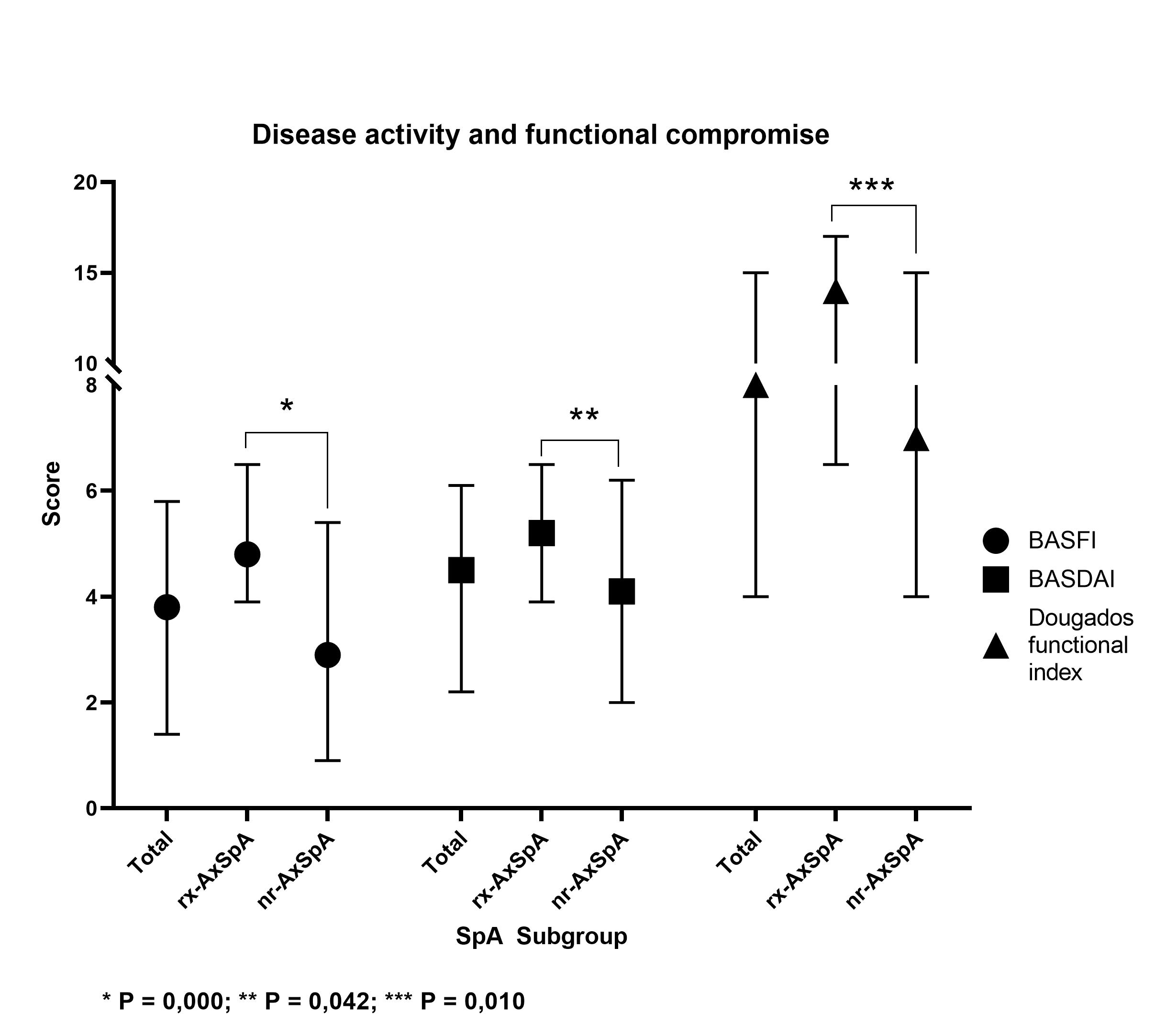Back
Poster Session C
Spondyloarthritis (SpA) including psoriatic arthritis (PsA)
Session: (1486–1517) Spondyloarthritis Including PsA – Diagnosis, Manifestations, and Outcomes Poster III
1515: Assessing the Difference Between Radiographic Axial Spondylorthritis and Non-radiographic Axial Spondylorthritis in a Two-center Descriptive Study with Mexican Patients: The Influence of Clinical, Demographic, Laboratory and Clinimetric Features
Sunday, November 13, 2022
1:00 PM – 3:00 PM Eastern Time
Location: Virtual Poster Hall
- JL
John Londono, MD, PhD, MSc
Preventive Care SAS
Chia, Colombia
Abstract Poster Presenter(s)
John Londono1, Gustavo Rodriguez-Salas2, Igor Rueda-Cardenas3, Ana Maria Santos1, Marta Mantilla1, Juan Camilo Santacruz2, Cesar Pachecho4, Gilberto Vargas-Alarcon5 and Ruben Burgos vargas6, 1Spondyloarthropathies study group - Universidad de La Sabana - Hospital Militar Central, Bogotá, Colombia, 2Spondyloathropathies study group Universidad de La Sabana Hospital Militar Central, Bogotá, Colombia, 3Spondyloarthropathies study group - Universidad de LA Sabana - Hospital Militar Central, Colombia, Colombia, 4Universidad Autónoma de chihuahua, Chihuahua, Mexico, 5Insituto Nacional de Cardiología Ignacio Chavez, Ciudad de México, Mexico, 6hospital general de mexico, Ciudad de México, Mexico
Background/Purpose: Spondyloarthritis (SpA) is a group of inflammatory rheumatic diseases that have some key features in common. According to ASAS, this condition is classified into three main disease groups: radiographic axial SpA (r-AxSpA), non-radiographic axial SpA (nr-axSpA), and peripheral SpA (pSpA). All patients with SpA with predominantly axial involvement are considered to have axial SpA, patients with significant radiographic sacroiliitis according to the modified New York criteria have r-axSpA. Patients without radiographic sacroilitis but with axial disease have nr-axSpA. More information is needed about the difference between these groups, specially in other populations like ours.
The objectives of this study are to systematically compare the demographic, clinical, and laboratory characteristics, disease onset, and physical examination findings of patients with r-AxSpA and nr-AxSpA; and identify factors that could predict a subtype of the disease.
Methods: Data from 148 patients over 18 years collected between 1998 and 2005 from Hospital General de México and Instituto Nacional de Ciencias Médicas y Nutrición. Patients classified according to ASAS criteria. We selected patients with nr-AxSpA and r-AxSpA and compared, clinical, demographic, and clinimetric variables. Logistic regression analysis was applied to identify the parameters associated with r-AxSpA or nr-AxSpA. Exclusion criteria included patients under biologic treatment.
Results: This study included 148 adult Mexican patients; general characteristics are exposed in table 1. HLA-B*27 was present in 57% of patients. Patients with nr – AxSpA were more women (41.4% vs 21.8%; P < 0.05), with less presence of HLA-B*27 (54.3% vs 92 .7%, P < 0.05) compared to the r – axSpA group. R-AxSpA patients were younger at symptom onset (16 vs. 21 years; P < 0.0001) than nr – axSpA (Image 1). Patients with nr – AxSpA had more of infection (32.9% vs 9.1%; P < 0.05), and less frequency of uveitis (10% vs 25.5% P < 0.05), more dactylitis (12.9% vs. 0%, P < 0.001), less painful entheses (3 vs. 6 P < 0.001), and less axial enthesopathy (1 vs. 4 P < 0.05) than r-AxSpA patients. The measures of thoracic expandability, modified Schober, right and left Schober, were significantly lower in r-AxSpA group than in the nr-AxSpA group, p < 0.0001). patients with r-AxSpA had higher BASFI (4.8 vs 2.9%; P < 0.0001), BASDAI (5.2 vs 4.1; P < 0.001), Dougados functional index (14% vs 7%; P < 0.05) than nr – AxSpA (Image 2). Logistic shows that the factors that most influence the presentation of r-AxSpA are the history of uveitis (OR 14, 95% CI 2.3-85), HLA-B*27 (OR 7, 97, 95% CI, 2.96-122), gender (male) (OR 6.16, 95% CI, 1.47-25.7), axial enthesopathy count (OR 1.17 95% CI, 1.029-1.332). The history of infection is a protective factor against radiographic disease (OR 0,194, 95% CI 0,04 – 0,91).
Conclusion: This study provides insight into the differences that may affect the prediction of radiographic progression in patients with nr-AxSpA. We found that patients with radiographic disease had a younger age of presentation, mostly male, higher prevalence of HLA-B*27, more history of uveitis, fewer episodes of dactylitis, more axial enthesopathy, and higher disease activity.
 General characteristics
General characteristics
 Age at onset of the disease
Age at onset of the disease
 Disease activity and functional compromise
Disease activity and functional compromise
Disclosures: J. Londono, None; G. Rodriguez-Salas, None; I. Rueda-Cardenas, None; A. Santos, None; M. Mantilla, None; J. Santacruz, None; C. Pachecho, None; G. Vargas-Alarcon, None; R. Burgos vargas, None.
Background/Purpose: Spondyloarthritis (SpA) is a group of inflammatory rheumatic diseases that have some key features in common. According to ASAS, this condition is classified into three main disease groups: radiographic axial SpA (r-AxSpA), non-radiographic axial SpA (nr-axSpA), and peripheral SpA (pSpA). All patients with SpA with predominantly axial involvement are considered to have axial SpA, patients with significant radiographic sacroiliitis according to the modified New York criteria have r-axSpA. Patients without radiographic sacroilitis but with axial disease have nr-axSpA. More information is needed about the difference between these groups, specially in other populations like ours.
The objectives of this study are to systematically compare the demographic, clinical, and laboratory characteristics, disease onset, and physical examination findings of patients with r-AxSpA and nr-AxSpA; and identify factors that could predict a subtype of the disease.
Methods: Data from 148 patients over 18 years collected between 1998 and 2005 from Hospital General de México and Instituto Nacional de Ciencias Médicas y Nutrición. Patients classified according to ASAS criteria. We selected patients with nr-AxSpA and r-AxSpA and compared, clinical, demographic, and clinimetric variables. Logistic regression analysis was applied to identify the parameters associated with r-AxSpA or nr-AxSpA. Exclusion criteria included patients under biologic treatment.
Results: This study included 148 adult Mexican patients; general characteristics are exposed in table 1. HLA-B*27 was present in 57% of patients. Patients with nr – AxSpA were more women (41.4% vs 21.8%; P < 0.05), with less presence of HLA-B*27 (54.3% vs 92 .7%, P < 0.05) compared to the r – axSpA group. R-AxSpA patients were younger at symptom onset (16 vs. 21 years; P < 0.0001) than nr – axSpA (Image 1). Patients with nr – AxSpA had more of infection (32.9% vs 9.1%; P < 0.05), and less frequency of uveitis (10% vs 25.5% P < 0.05), more dactylitis (12.9% vs. 0%, P < 0.001), less painful entheses (3 vs. 6 P < 0.001), and less axial enthesopathy (1 vs. 4 P < 0.05) than r-AxSpA patients. The measures of thoracic expandability, modified Schober, right and left Schober, were significantly lower in r-AxSpA group than in the nr-AxSpA group, p < 0.0001). patients with r-AxSpA had higher BASFI (4.8 vs 2.9%; P < 0.0001), BASDAI (5.2 vs 4.1; P < 0.001), Dougados functional index (14% vs 7%; P < 0.05) than nr – AxSpA (Image 2). Logistic shows that the factors that most influence the presentation of r-AxSpA are the history of uveitis (OR 14, 95% CI 2.3-85), HLA-B*27 (OR 7, 97, 95% CI, 2.96-122), gender (male) (OR 6.16, 95% CI, 1.47-25.7), axial enthesopathy count (OR 1.17 95% CI, 1.029-1.332). The history of infection is a protective factor against radiographic disease (OR 0,194, 95% CI 0,04 – 0,91).
Conclusion: This study provides insight into the differences that may affect the prediction of radiographic progression in patients with nr-AxSpA. We found that patients with radiographic disease had a younger age of presentation, mostly male, higher prevalence of HLA-B*27, more history of uveitis, fewer episodes of dactylitis, more axial enthesopathy, and higher disease activity.
 General characteristics
General characteristics Age at onset of the disease
Age at onset of the disease Disease activity and functional compromise
Disease activity and functional compromiseDisclosures: J. Londono, None; G. Rodriguez-Salas, None; I. Rueda-Cardenas, None; A. Santos, None; M. Mantilla, None; J. Santacruz, None; C. Pachecho, None; G. Vargas-Alarcon, None; R. Burgos vargas, None.

